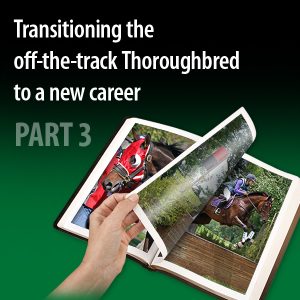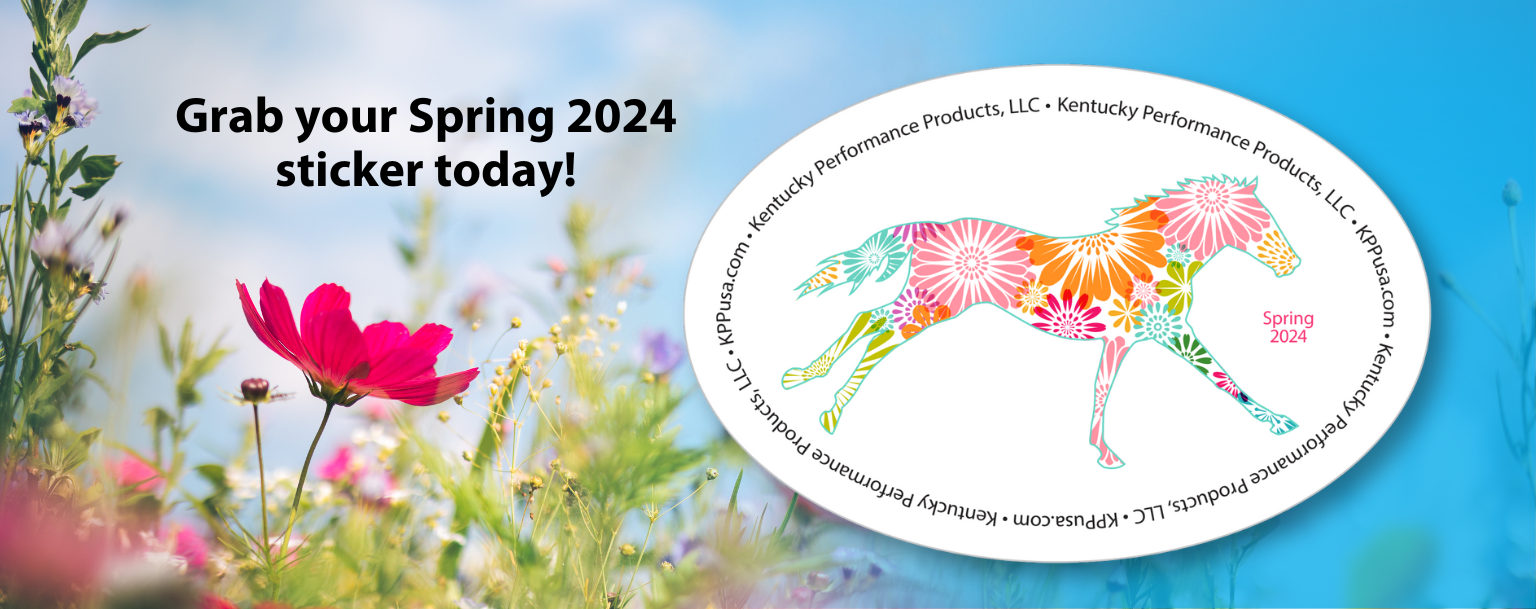
Meeting the Energy Requirements of an Off-the-track Thoroughbred
If your Thoroughbred is coming straight from the track and has been in training, their metabolic rate will still be high due to intense training and elevated caloric intake. Once leaving the track, many Thoroughbreds benefit from a period of rest and relaxation, along with time to adjust to their new schedules. Their caloric requirements may decrease depending on the type of work involved in their new career, but this will not happen immediately. A gradual decrease in calories (to a level appropriate for their new career) over several weeks is recommended to prevent weight loss. Grass may be a new element to your Thoroughbred’s diet. Your OTTB will need to be slowly introduced to pasture, and if plenty of pasture is available it can become the foundation of their diet. If pasture is not available, high-quality forage must be provided.
Thoroughbreds often have the reputation of being hard keepers. Many Thoroughbreds are not efficient at converting dietary energy to fat. As with all horses, the main component of their diet should be high-quality forage, but a concentrated energy source may be required to maintain weight in their new career. Feeds formulated for performance horses or senior horses with energy coming from beet pulp, vegetable oil, and soy hulls are good options. While providing some simple carbohydrates (sugars and starches found in whole grains and molasses) is important, this can lead to “hot” or excitable behavior. When necessary, these energy sources can be limited until they are needed to fuel top-level performance later on.
If your Thoroughbred needs additional sources of energy to maintain weight, consider adding a supplemental fat to the diet. Fats, such as stabilized rice bran, are digested at a much slower rate and don’t cause the hormone spikes associated with excitability. Fats contain more energy pound for pound than simple carbs, so you can feed smaller meals and deliver just as many calories, if not more. As an added benefit, fats will not cause the hindgut overload that large sugar/starch meals can cause, reducing the risk of colic or laminitis.
Not all Thoroughbreds coming off the track will be hard keepers in their new career. You may find your Thoroughbred only requires a feed formulated for a low work level. With any feed you use, remember that if you are not feeding the minimum amount recommended by the manufacturer your horse will not receive the required amounts of vitamins and minerals. If you are feeding less than the recommend levels, or your horse is on pasture alone, they will benefit from a well-balanced vitamin and mineral supplement.



1 Comment
Pingback
[…] Read part 3: Meeting the energy requirements of the OTTB […]